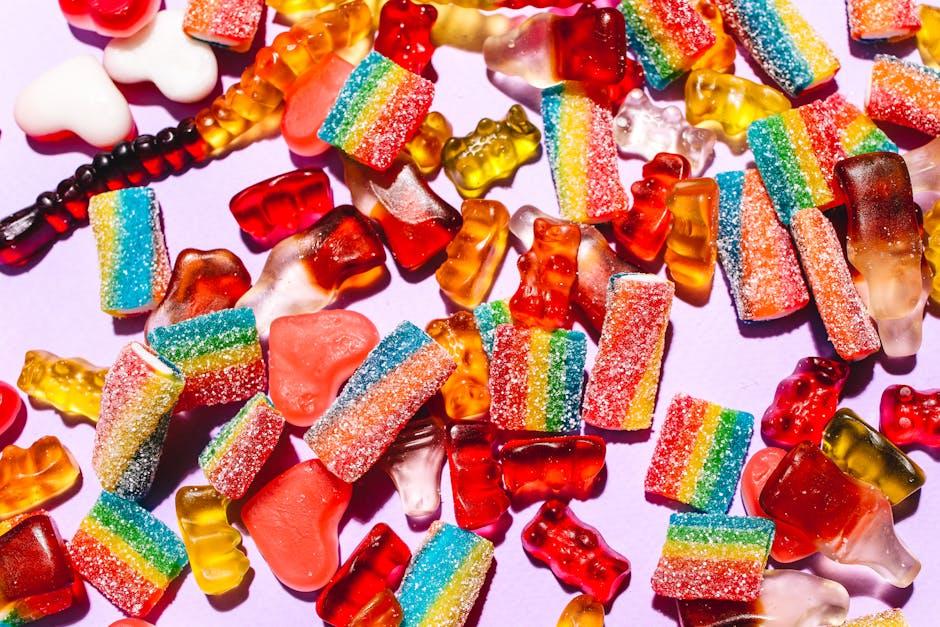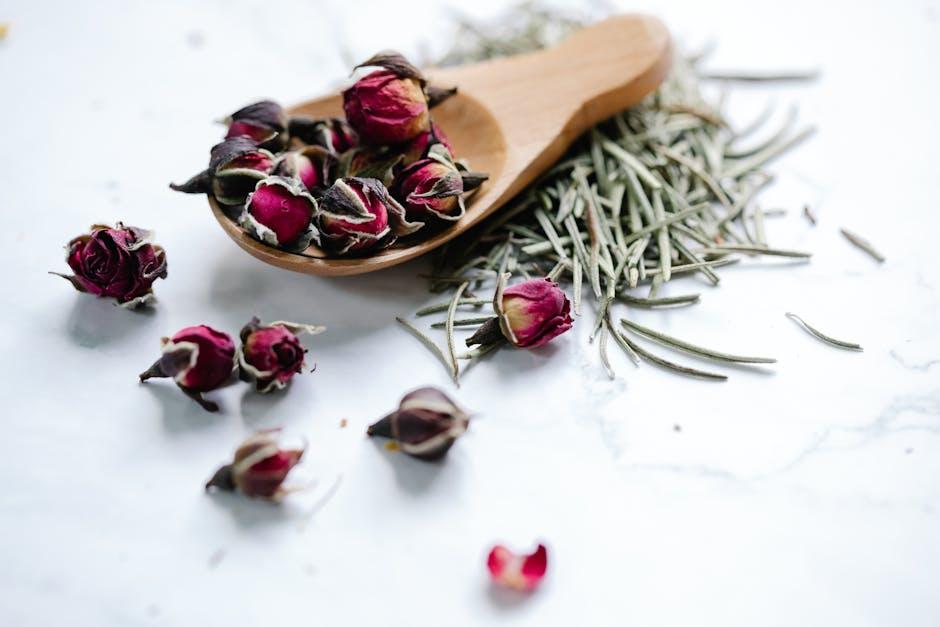In the intricate dance of managing diabetes, the foods we choose often play the lead role. Among the myriad of dietary options, low-glycemic foods stand out as steady partners, helping to maintain balanced blood sugar levels without sudden spikes. These nourishing staples not only provide essential nutrients but also offer a gentle, sustained source of energy-crucial for those navigating the challenges of diabetes. In this article, we’ll explore some of the top low-glycemic foods that can seamlessly fit into your daily meals, supporting a healthier and more balanced lifestyle.
Table of Contents
- Understanding the Impact of Glycemic Index on Blood Sugar Control
- Nutrient-Rich Low-Glycemic Vegetables to Include in Your Diet
- Powerful Whole Grains That Support Steady Energy Levels
- Lean Proteins and Healthy Fats for Balanced Meals
- Smart Snack Choices to Keep Blood Sugar Stable Throughout the Day
- Q&A
- To Conclude

Understanding the Impact of Glycemic Index on Blood Sugar Control
Blood sugar control hinges significantly on the types of carbohydrates consumed, and this is where the glycemic index (GI) becomes a crucial guide. Foods with a low GI release glucose slowly and steadily into the bloodstream, helping to avoid the sharp spikes associated with high-GI foods. This gradual release can enhance insulin sensitivity and support better energy balance throughout the day. Incorporating low-glycemic foods into your diet can thus provide a more consistent and predictable blood sugar response, which is vital for managing diabetes effectively.
When planning meals, selecting items based on their glycemic index allows for smarter nutritional choices. Below is a simple overview of common food categories and their typical GI ranges to help identify the best options for blood sugar control:
| Food Category | Typical GI Range | Examples |
|---|---|---|
| Low GI (≤55) | 35 – 55 | Quinoa, lentils, most fruits, non-starchy vegetables |
| Medium GI (56-69) | 56 – 69 | Brown rice, sweet corn, whole wheat bread |
| High GI (≥70) | 70 and above | White bread, white rice, potatoes, sugary snacks |
- Focus on fiber-rich ingredients like legumes and vegetables to naturally lower the meal’s glycemic impact.
- Pair carbohydrates with protein or healthy fats to further temper blood sugar spikes.
- Monitor portion sizes even for low-GI foods to maintain overall balance.

Nutrient-Rich Low-Glycemic Vegetables to Include in Your Diet
When managing blood sugar levels, choosing vegetables that are naturally low on the glycemic index yet packed with essential nutrients is a strategic approach. Among the top contenders are leafy greens like spinach, kale, and Swiss chard, which not only provide abundant vitamins A, C, and K but also contribute minimal carbohydrates, helping maintain steady glucose levels. Cruciferous vegetables such as broccoli, cauliflower, and Brussels sprouts are equally beneficial, offering a wealth of fiber and antioxidants that support overall metabolic health.
Incorporating these vegetables into your meals can be both delicious and rewarding. Consider creating vibrant salads with crunchy celery and zucchini or roasting a medley of bell peppers and eggplant for a savory side dish. To help you make informed choices, here is a quick guide to some nutrient-rich, low-glycemic vegetables and their key benefits:
| Vegetable | Key Nutrients | Glycemic Index |
|---|---|---|
| Spinach | Iron, Magnesium, Vitamins A & K | 15 |
| Cauliflower | Vitamin C, Fiber, Folate | 15 |
| Brussels Sprouts | Vitamin C, K, Fiber | 15 |
| Zucchini | Vitamin C, Manganese, Fiber | 15 |
| Bell Peppers | Vitamin C, Antioxidants | 15 |

Powerful Whole Grains That Support Steady Energy Levels
Integrating whole grains into your meals can be a game-changer when managing blood sugar levels. Unlike refined grains, these powerhouses retain their natural fiber, vitamins, and minerals, which help slow digestion and prevent sharp blood sugar spikes. Their low glycemic impact ensures a gradual release of energy, sustaining you through your day without the dreaded crashes. Incorporate options like quinoa, barley, and steel-cut oats to enjoy rich textures and subtle, nutty flavors that enhance every dish.
Below are some whole grains that not only nourish but also stabilize energy levels:
- Quinoa: Complete protein and rich in fiber.
- Barley: High in beta-glucans, supporting heart health.
- Bulgur: Quick to cook and full of vitamins.
- Steel-cut oats: Promote fullness and steady glucose levels.
| Whole Grain | Glycemic Index (Approx.) | Key Benefit |
|---|---|---|
| Quinoa | 53 | Complete protein source |
| Barley | 28 | High in soluble fiber |
| Bulgur | 46 | Supports digestion |
| Steel-cut oats | 42 | Provides sustained energy |

Lean Proteins and Healthy Fats for Balanced Meals
Incorporating lean proteins such as skinless poultry, tofu, and fish into your diet not only stabilizes blood sugar but also keeps you satiated for longer periods. These options are naturally low in fat and free from added sugars, making them ideal for managing glucose levels. Complementing these proteins with healthy fats like avocados, nuts, and olive oil adds a rich source of monounsaturated and polyunsaturated fats, which support heart health-a crucial consideration for those managing diabetes.
Consider using the following options to design balanced meals:
- Grilled salmon drizzled with a lemon-olive oil dressing
- Stir-fried tofu with a handful of walnuts and mixed veggies
- Turkey breast slices with a side of avocado and quinoa salad
| Protein Source | Healthy Fat | Per Serving Glycemic Impact |
|---|---|---|
| Grilled Chicken Breast | Avocado (¼ medium) | Minimal |
| Baked Tofu | Walnuts (1 oz) | Low |
| Broiled Salmon | Extra Virgin Olive Oil (1 tbsp) | Minimal |

Smart Snack Choices to Keep Blood Sugar Stable Throughout the Day
Maintaining balanced blood sugar doesn’t mean sacrificing taste or satisfaction between meals. Smart snacking involves selecting foods with a low glycemic impact that provide steady energy and curb hunger without causing dangerous spikes. Think beyond the usual fare-try options like crisp celery sticks paired with almond butter or a small handful of walnuts mixed with fresh blueberries. These snacks are rich in fiber and healthy fats, which slow digestion and promote stable glucose levels, making them ideal companions throughout your day. Embracing variety also means your palate stays delighted while your body stays balanced.
To make it easier, here’s a quick guide featuring some excellent grab-and-go choices that keep blood sugar steady:
- Chia pudding with unsweetened almond milk and a sprinkle of cinnamon
- Greek yogurt topped with a few raspberries and crushed flaxseeds
- Sliced cucumber and guacamole dip for a crunchy and creamy combo
- Boiled eggs paired with cherry tomatoes for a protein-packed boost
| Snack | Fiber (g) | Glycemic Index |
|---|---|---|
| Almonds (1 oz) | 3.5 | 15 |
| Celery sticks (1 cup) | 1.6 | 15 |
| Blueberries (½ cup) | 2.0 | 53 |
| Greek yogurt (plain, ½ cup) | 0 | 11 |
Q&A
Q&A:
Q1: What does it mean for a food to have a low glycemic index?
A1: The glycemic index (GI) measures how quickly a food raises blood sugar levels after eating. Low-GI foods cause a gradual rise in blood glucose, helping to maintain steady energy and better blood sugar control-key for managing diabetes.
Q2: Why are low-glycemic foods important for people with diabetes?
A2: Low-GI foods slow down glucose absorption, preventing sharp spikes and crashes in blood sugar. This stable effect supports improved insulin sensitivity and reduces the risk of diabetes-related complications.
Q3: Can you give examples of top low-glycemic foods beneficial for diabetes?
A3: Certainly! Some top choices include:
- Leafy Greens: Spinach, kale, and Swiss chard are packed with fiber and nutrients but have minimal impact on blood sugar.
- Berries: Blueberries, strawberries, and raspberries provide antioxidants with a low GI.
- Legumes: Lentils, chickpeas, and black beans offer protein and fiber while releasing glucose slowly.
- Whole Grains: Barley, quinoa, and steel-cut oats help keep blood sugar steady.
- Nuts and Seeds: Almonds, walnuts, and chia seeds contribute healthy fats and fiber without raising glucose sharply.
Q4: Are low-glycemic foods the same as low-carb foods?
A4: Not exactly. Low-GI focuses on how fast glucose enters the bloodstream, while low-carb emphasizes total carbohydrate intake. Some low-GI foods may contain moderate carbs but cause a slower blood sugar response.
Q5: How can someone incorporate more low-glycemic foods into their diet?
A5: Start by replacing high-GI staples like white bread or sugary snacks with whole grains and fresh produce. Experiment with legumes in soups or salads, snack on nuts, and add berries to yogurt or oatmeal for natural sweetness without spikes.
Q6: Are there any precautions when choosing low-glycemic foods?
A6: Yes. Portion size matters-overeating even low-GI foods can affect blood sugar. Also, pairing carbs with protein or healthy fats can further stabilize glucose. Always consult healthcare providers or dietitians for personalized advice.
Q7: Can lifestyle changes along with low-GI food choices improve diabetes management?
A7: Absolutely. Combining a balanced low-GI diet with regular physical activity, stress management, and medication adherence creates a holistic approach to diabetes care.
Embracing low-glycemic foods doesn’t mean sacrificing flavor or variety-it’s about making smarter choices that nurture your health and empower you to live well with diabetes.
To Conclude
In the journey of managing diabetes, choosing the right foods can feel like navigating a complex map-but low-glycemic options offer clear signposts toward better health. By embracing these nutrient-rich, blood-sugar-friendly foods, you’re not just satisfying hunger-you’re empowering your body, stabilizing energy, and crafting a foundation for long-term wellness. Remember, while no single food is a magic bullet, weaving these low-glycemic choices into your daily meals can transform how you live with diabetes, one mindful bite at a time.











